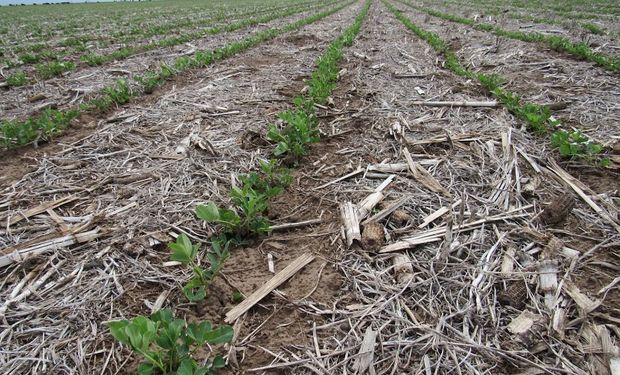18ofMarchof2021at10:06
–
The growing demand for food, climate change and the need to reduce the environmental impact of agricultural production enhance the role of organic products in agriculture. In the agricultural input industry they are called biosoluciones, and these are products of natural origin that, according to their use, are divided into biostimulants, biofertilizers and biocontrollers.
UPL is the second global company in this segment and has an exclusive program called Pronutive, under which integrates the biosoluciones with the products of crop protection covering the needs of the producer throughout the entire life cycle of the crop. In Argentina, the biosolutions segment has a new manager: he is Daniel Germinara, specialist in soil fertility and crop fertilization with extensive experience in the industry.
“In our country, biosolutions are in a stage of initial adoption, but in clear growth. Leaving aside the soybean inoculants market, a segment well known to producers, more and more are starting to experiment the benefits that this type of product They contribute to the yield, quality and / or stability of production, and contribute to problems such as competition with weeds, efficiency in the use of nutrients, and key resources such as water. It is a whole world of knowledge with specific applications that producers have yet to discover ”, explains Germinara.
–
But What do biosolutions contribute? On the one hand, biostimulants act on the mitigation of stress suffered by a crop, promoting the development of roots, vegetative parts or fruits. This category also includes soil improvers. For their part, biocontrollers are natural substances that control pests and diseases, as well as macro-organisms such as beneficial insects. Finally, there are biofertilizers, which aim to improve or enhance the nutrition of a crop. Among them are the inoculants used in soybeans.
The market
According to statistics from DunhamTrimmer LLC, the world’s leading biologics research company, the global market for biocontrol and biostimulants is estimated to be worth more than 8 billion dollars by 2021. The European Union and the United States lead the adoption, followed by Asia-Pacific and, in fourth place, Latin America.
According to the same source, the biocontrol market is growing globally at a rate of 17% and that of biostimulants does it between 10 and 15% annually. And although Latin America is the market with the least application, it is the one that grows at the fastest rates.
–
Behind this growth is climate change. “The extreme environmental conditions to which crops are being subjected make it necessary to include tools that help mitigate stress. There biostimulants are of great value. Also important is the tendency to lower the environmental impact of agricultural production, which encourages the inclusion of biocontrol tools to fight pests and diseases”, Argues Germinara and highlights that a cultural change is beginning to take place in Argentina linked to the incorporation of biosolutions to extensive agriculture. “The gain is in maximizing the use of resources such as water, light, the edaphic environment, the genetic potential of the materials, among others. This is the axis of work that we face from the Pronutiva program ”, he clarifies.
One of the success stories in extensive agriculture cited by Germinara has as its protagonist the cfinal of peanuts. “From UPL we have been working hard and with great success in attending to the rapid and uniform establishment of the crop with technologies such as Biozyme, a fertilizer with biostimulant activity”, he describes. At the same time, within the framework of the work that UPL has been carrying out together with RAVIT in the north of Córdoba, “we have incorporated stress management in corn with biosolutions. A line of research and experimentation that opens up a new, very auspicious panorama and that also allows us to demystify the economic and agronomic viability of biosolutions in the main agricultural crops ”, concludes Germinara.
—


